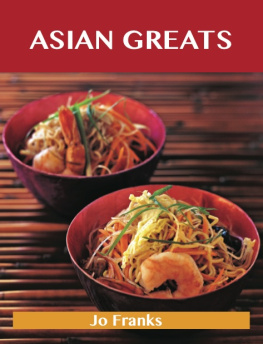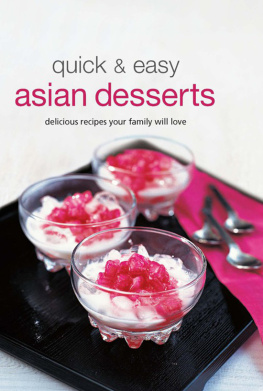ASIAN RECIPE
dessert delights
The Best Recipes From Asia
By Charles Ho
Copyright by Charles Ho 2012 All rights reserved. No part of this report may be reproduced or transmitted in any form whatsoever, electronic, or mechanical, including photocopying, recording, or by any informational storage or retrieval system without express written, dated and signed permission from the author.
Dedication
This book is dedicated to my dad, a master chef and gourmet mentor.
Table of Contents
INTRODUCTION

When it comes to desserts, Asia is the perfect place to taste almost all international flavours. Although western desserts have been introduced in the region, almost all Asian countries and their culture has successfully preserved the delicacies they truly own.
Brief background on Asian dessert heritage and tradition
Asian desserts are closely connected to the local culture and traditions. These unique desserts came into existence not because of cravings but of necessity. It is only during the recent years that chefs and homes have reinvented some of these desserts for peoples enjoyment. Early in history, desserts were considered part of everyday meal. Mixing of sugar and sweets was a mean of preserving the food while people waited for the next harvest season.
In some cultures, earliest desserts were prepared during festivals and other celebrations that honour their local gods, deity, and patrons. Majority of Asian desserts also have their own meanings and purposes. In China for example, the sticky rice cakes and desserts would symbolize the stickiness and closeness of family relationships, while the moon cakes and the nian gaos symbolizes good luck, prosperity, and bountiful harvest. Most of Asian desserts also purposely adapt to the changing seasons. During the summer, Asians have their own versions of ice creams like the several kinds of sorbets, mixed fruits on ice, and ice cones flavoured with tropical fruit syrups. During the rainy and colder seasons, the steaming puddings and sticky cakes reign in the dining tables.
Popular Asian Desserts
The following are some of the popular and commonly served desserts in Asia. And because of their diversity, some desserts may found their similarities or can have their varieties in other countries or cultures.
- Rice or sticky rice cakes . Rice is the staple food of Asians. It is not surprising therefore that rice has been reinvented and used to make various kinds of desserts. Cakes and sweets made out of rice have their own names in almost each Asian country. The Chinese call them the gao, the Filipinos bibingka and puto, the Japanese mochi, the idli in India, etc...- Tapiocas . Not known by many westerners, tapioca has its roots from Asia. And if you would search for tapioca in the Asian region, there could be hundreds of varieties and versions. To cite an example there is the steamed tapioca cake, pandan tapioca, tapioca pudding, candied tapioca, tapioca sweetened by coconut milk, etc...- Sweetened or glazed fruits and root crops . Another popular category of Asian desserts are the use of numerous fruits and root crops that are sweetened and glazed with syrup, honey, sugar, or coconut milk. Popular examples include the sweetened or candied bananas, taro root, cassava candies and sweets, beans in syrup, pumpkin in sweetened coconut milk, and many others. These kinds of desserts are simple and very easy to prepare.- Fruits and mixed fruits on ice . Asia has a tropical hot weather which makes the different ice-based desserts popular. Asia has also a wide variety of tropical fruits and produce like mangos, pineapple, coconut, banana, etc. The concept of mixing these tropical fruits and chilling them with ice has been very popular. The Philippines has its very popular halo-halo while Japan has its cherry ice cones.
Ingredients Commonly Used
As can be noticed from the categories of desserts above, much of the ingredients used are those native and common in Asia. Rice is one major ingredient specifically the sticky rice variety. Root crops such as taro, cassava, and potato are also heavily used in making cakes, puddings, and sweets. Plus, the tropical flavours of various fruits like mango, banana, pineapple, durian, and others wont be absent. These ingredients are sweetened either by one or a combination of sugar, honey, sugarcane, milk and dairy products, coconut milk, etc...
This recipe book will show you the best, hassle-free way to cook Asian desserts in your own kitchen. So your days of rushing to Asian restaurants are over; whenever your heart craves for one, go to your kitchen, keep this book handy and amaze everyone with your newly-discovered culinary skills.
CHINESE DESSERTS

Chinese take cooking very seriously and consider it as a treasured art. Their appreciation for cooking is also reflected in their desserts, in which the ingredients blend together to create a culinary rendition. However, the idea of a dessert in China is somewhat different from that of the western culture. Chinese meals dont have any specific reserved for savouring sweet dishes. Rather, they are often relished during tea time or served alongside main dishes. Nevertheless, if your sweet tooth craves for some Oriental sweetness at the end of meal, just go for it; after all deviating a little from the Chinese tradition wont be a crime!
Health remains a prime concern in China while cooking food. Thus, most Chinese desserts are low in calorie counts and boast of low-fat ingredients like coconut milk, tofu, beans, minimal use of sugar and lots of fruits. So if you are a weight watcher, then the days of dealing with your sweet cravings are over. Gorge on a Chinese sweet delicacy whenever your heart desires without adding flab to your belly and enjoy a slice of health with Chinese desserts.
Before you start binging on Chinese desserts, lets take a look at what Chinese cuisine has to offer:
Bing : These are baked, flaky pastry like sun cake, moon cake and wife cake. Candies : These sweet confections with nutty or fruity flavours are usually made of honey, cane or malt sugar and their sugary yum quotient is bound to bring back memories of childhood. Jellies : These soft and wobbly gels of pleasure, like aiyu and grass jelly make great add-ons for desserts and often have medicinal attributes. Gao : These chewy, fluffy or firm glutinous rice desserts are a rage in China. Soup : Though it might sound unusual, but Chinese soups are often given a dessert-like punch and come with restorative properties just like most Chinese delicacy.
So take a look at the recipes below and enjoy Chinese desserts!
NIAN GAO
A much-loved sticky fruit cake served as an offering to Kitchen God especially during Chinese New year.
Makes: 1 medium-sized cake
Ingredients:
3 cup glutinous flour7 oz boiling water1 tbsp milk2/3 cup brown sugarcup Chinese datescup nutscup dried fruits1 tbsp sesame seeds1 tbsp vegetable oilWater as needed
Method:
Pour some boiling water in a bowl of sugar and keep stirring until the latter dissolves; set the sweetened water aside to cool.Meanwhile, soak the dates in a bowl of hot water for about half an hour or until they soften and then slice them into halves; do away with the pits.Empty the cups of glutinous flour in a bowl and make a deep depression in the middle to pour in the sweetened water.Pour the milk over the flour and knead the mixture into soft, pliable dough; you can add 1 tbsp of water at times to give it a soft, satin-like texture.Add half of the sliced dates, nuts and dried fruits to the dough and knead the latter further until they are properly incorporated into it.Drizzle some oil in a 7 square cake mould to grease and place the dough in it.Spread the dough out until it occupies every edge of the mould and arrange the rest of the dates to decorate.Top it up with sesame seeds and steam the nian gao for about 45 minutes or until its edges separate from the pan or mould.Allow the cake to cool before taking it out from the mould and cover it with a wax paper before leaving the cake overnight in the refrigerator.Slice the cake and serve.
Next page



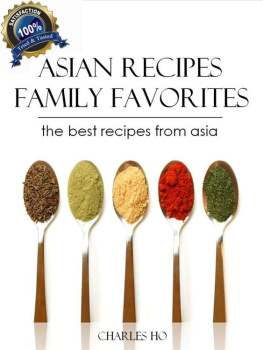
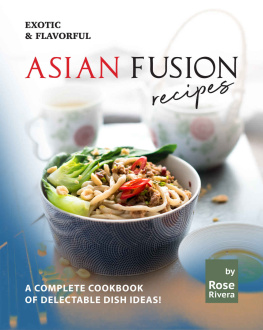
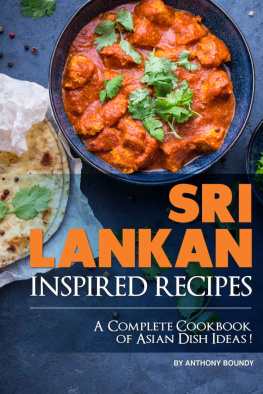
![Periplus Editors - Classic Asian cakes and desserts: [quick and delicious favorites]](/uploads/posts/book/226703/thumbs/periplus-editors-classic-asian-cakes-and.jpg)
